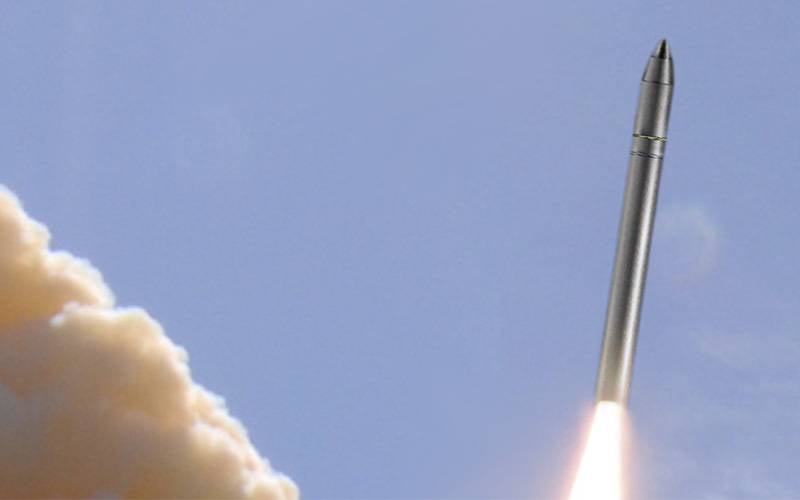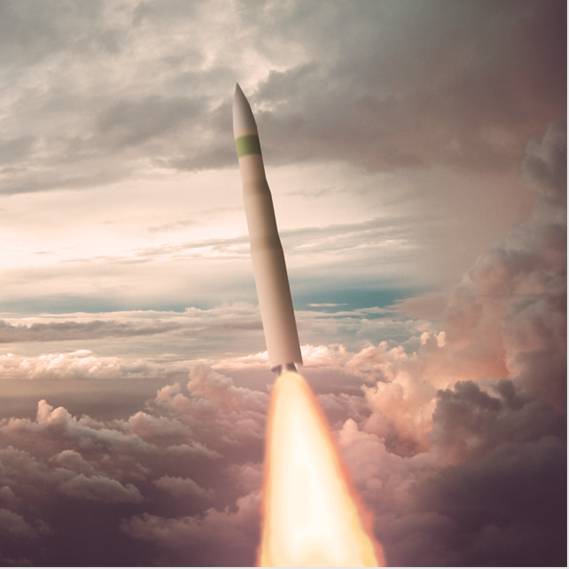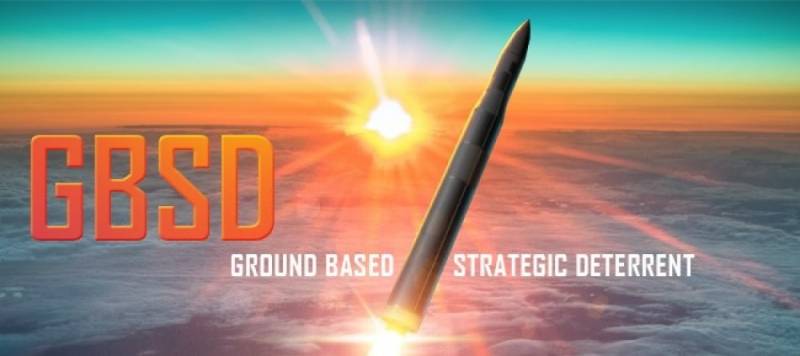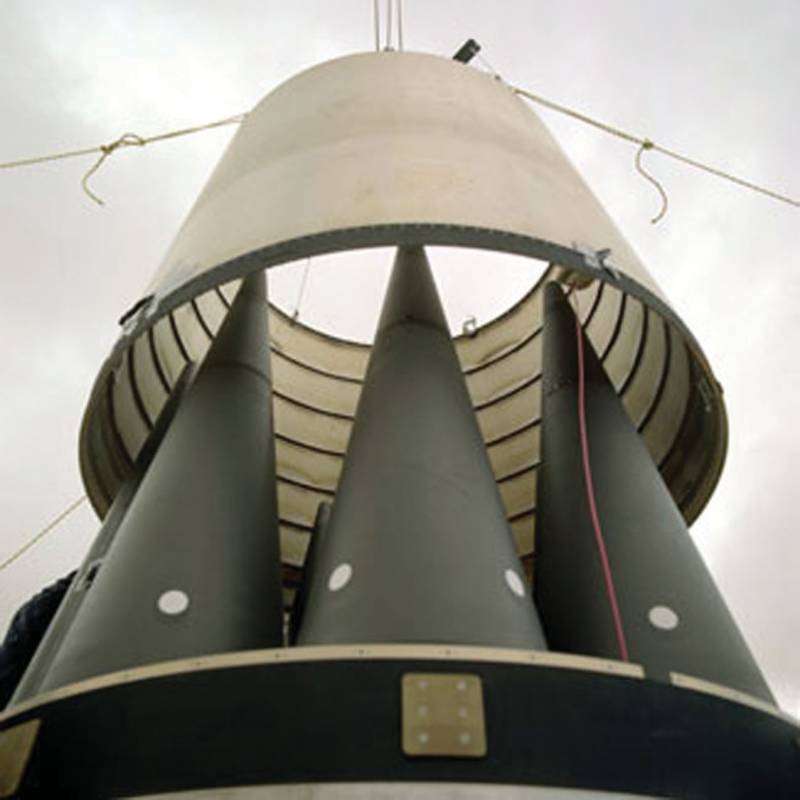Development progress of the LGM-35A Sentinel ICBM. First trials and first problems

At the end of the current decade, the US Air Force plans to put promising strategic missile systems with the LGM-35A Sentinel intercontinental ballistic missile on combat duty. The new ICBM is already being developed by Northrop Grumman and its subcontractors. To date, the project has gone through several early stages, and testing of individual components is now beginning. In addition, the first difficulties appear.
At the design stage
Six years ago, in July 2016, the Center for Nuclear weapons The US Air Force (Air Force Nuclear Weapons Center) has issued a request for proposals for the development and production of advanced ICBMs to replace the existing LGM-30G Minuteman III. The new program was called Ground Based Strategic Deterrent (GBSD).
Boeing and Northrop Grumman applied for participation in the competition. In August 2017, they received contracts for the development of preliminary designs. Boeing received $349 million to carry out the work, while Northrop-Grumman received $329 million. In 2020, the Air Force planned to evaluate two projects and choose the most successful one for further development.
However, in mid-2019, an organizational dispute arose that caused Boeing to pull out of the GBSD program. This predetermined the result of the competitive part - at the end of the same year, Northrop Grumman was declared the winner of the program. In September 2020, the company received a full-scale order for development, testing and launch of production of a new rocket. All these activities were estimated at $13,3 billion.
The executing company, with the involvement of a number of subcontractors, began the full-fledged development of a new missile system and its individual components. There were active works, but their details remained unknown. At the same time, officials have maintained that the program continues as scheduled and will be completed on time. In addition, in April of this year, ICBMs from the GBSD program were assigned the new designation LGM-35A and the name Sentinel (“Sentinel”).
Old and new
According to known data, within the framework of the LGM-35A project, a large number of various components and assemblies are being developed from scratch. Now all organizations participating in the program are engaged in their creation. At the same time, some finished products are also used, incl. borrowed from ICBMs of the previous generation.
Rocket stages, solid-propellant rocket engines with enhanced performance, control systems, etc. are created from scratch. How far progress has been made in this area is unknown. At the same time, no tests of individual systems and units of the new development have been reported yet. Probably, the main elements of the future ICBM are not yet ready for this.
A similar approach is used in the field of combat equipment. Especially for the LGM-35A, a new individual targeting warhead is being developed under the designation Mk 21A. It is an improved version of the serial Mk 21 and will have to provide some increase in combat performance. To date, the design has been completed and flight tests of the new unit are beginning.
At the first stage of service, the Mk 21A units will be equipped with the existing W87 thermonuclear warheads currently used on the Minutemen. In the future, they will be equipped with upgraded W87 Mod. 1. The development of this product is being carried out right now by specialized organizations from the Ministry of Energy.

To save money and speed up rearmament, it is proposed to use Sentinel on existing silo launchers for the LGM-30G. During the re-equipment, the mines will undergo repairs and receive new equipment. Also planned is the modernization of command posts at various levels responsible for the use of land-based ICBMs.
A deterrent
According to known data, the GBSD program provides for the creation of a three-stage ICBM with nuclear warheads. From the point of view of the overall architecture, the new LGM-35A missile will not be fundamentally different from the current LGM-30G. At the same time, new materials and technologies will improve all the main characteristics and provide the required capabilities that meet current challenges.
Like previous American ICBMs, the new Sentinel will have three stages with solid propellant engines, as well as a separate stage for breeding warheads. The flight will be carried out using a modern control system with inertial and satellite navigation.
The exact flight characteristics of the Sentinel have not yet been disclosed. It can be assumed that in this respect the rocket will not be inferior to its predecessor, flying 14 thousand km. The launch weight of the rocket and the weight to be thrown were also not specified.
A multiple reentry vehicle with an unknown number of individual targeting warheads will be used. The new block Mk 21A should show improved performance and carry one of two types of warhead. The existing W87 of the original modification has a capacity of 300 kt. Upgraded charge W87 Mod. 1 will give 475 kt. It is also expected to equip the warhead with means of overcoming missile defense of an unknown type.
Earlier it was reported that the Pentagon plans to equip ICBMs with only "traditional" warheads. The introduction of hypersonic gliders is not envisaged. However, in the future, the customer may change his mind and launch an appropriate project.
First failure
As it has now become known, the development of the Mk 21A warhead has reached the stage of flight tests. In the near future, experimental units should show their capabilities and confirm the design characteristics. However, the verification process has already encountered unforeseen difficulties.
A few days ago, the US Air Force announced a test launch of the new Mk 21A warhead, and this was probably the first such event. The launch took place on July 6 at Vandenberg Air Force Base (California) and was carried out using a Minotaur II + launch vehicle.
It is reported that the launch was unsuccessful. In just 10-11 seconds. after launch, the launch vehicle exploded. Accordingly, the experimental block Mk 21A could not enter the calculated trajectory and complete the flight task. Its wreckage, along with fragments of the rocket, fell near the launch pad. The causes of the accident are being investigated, but they are unlikely to be related to the experimental payload of the rocket.
An accident during the launch of the warhead violates the test schedule and negatively affects the entire course of the GBSD / LGM-35A program. At the same time, these events show the current progress in the development of new combat equipment. However, it remains unclear how long it will take to test and refine the warhead and related products.
Plans for the future
According to known data, in the coming years, Northrop Grumman and subcontractors will continue to develop all the necessary units and systems. It is also necessary to conduct separate tests of the new warhead and other components. Then full-fledged flight tests will begin. Their start dates have not yet been specified. According to various estimates, the first full launch will take place no earlier than the middle of this decade.
According to current plans, the work will be completed by the end of the twenties. The first LGM-35A products should take up combat duty in 2028-30. At this stage, ICBMs will be equipped with the first version of combat equipment with existing warheads. The complete transfer of missile formations to the new weapon will be completed by 2036. By this time, the updated warhead W78 Mod should go into service. one.
The Sentinel missile is built with an eye to the distant future. Products of this type will serve at least 40-45 years. The process of decommissioning such weapons, according to current plans, will begin no earlier than 2075. Thus, the LGM-35A will become another "long-liver" of the nuclear triad. However, she is unlikely to be able to break the record of the Minuteman III missile, which was put into service in 1970.
New Challenges
Such bold plans are associated with special challenges and risks. They make high demands on the design of the rocket itself and related products and systems. Accordingly, the developers have a great responsibility, and any mistake at the current stages can have the most serious consequences in the future.
The LGM-35A / GBSD program has already reached the stage of testing individual units, which gives the Air Force certain reasons for optimism. However, contractors have a lot of other tasks to solve, and this will take several years. Whether it will be possible to complete the project on time and with the desired result is not yet clear. However, the new missile is of particular importance to national security, and therefore the Pentagon will do everything possible to bring it to combat duty.


Information